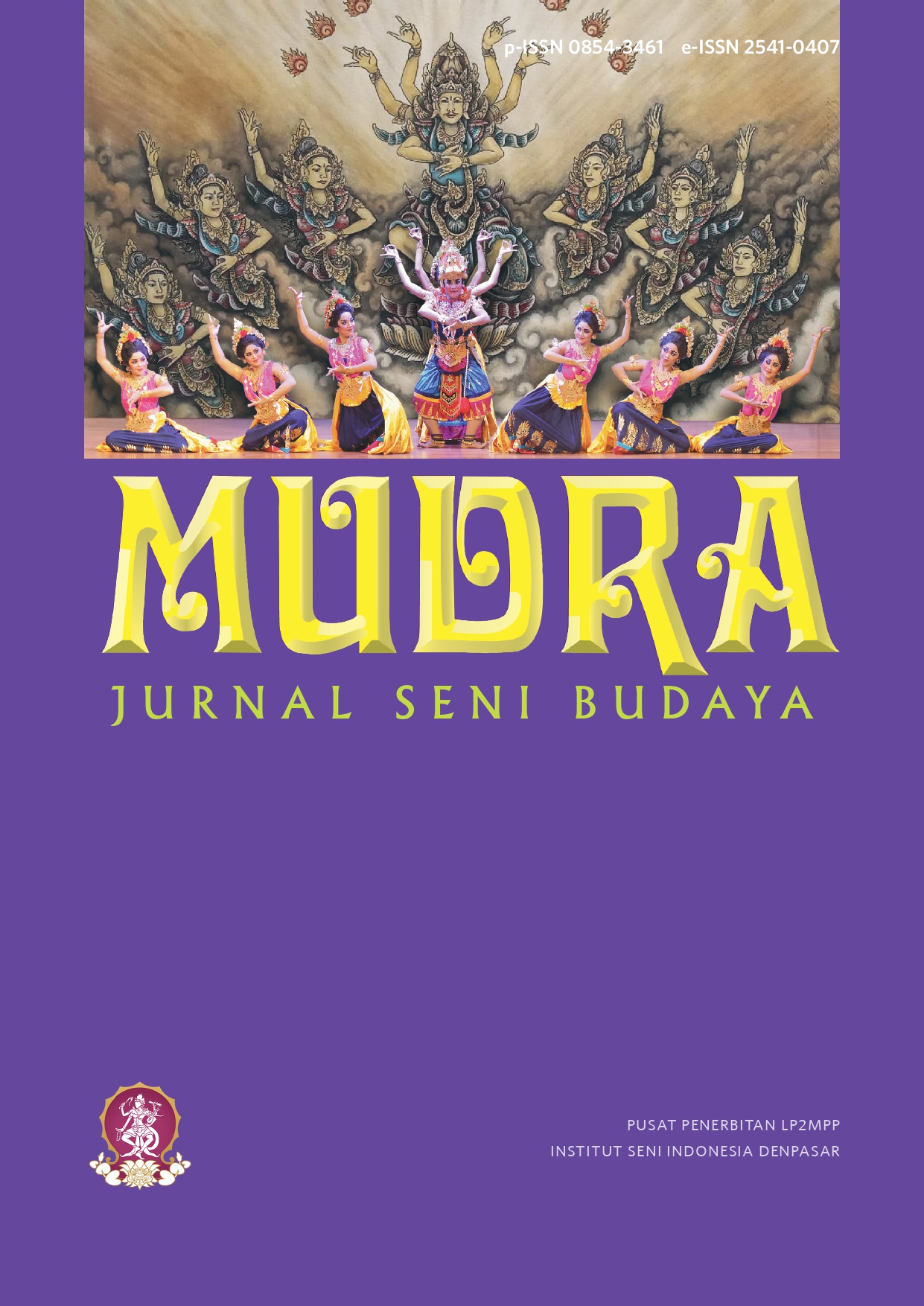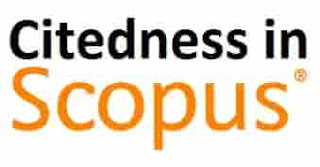Revitalizing Traditional Crafts: Bridging Cultural Heritage and Innovation in Indonesia's Creative Economy
DOI:
https://doi.org/10.31091/mudra.v40i3.3234Keywords:
Traditional Crafts, Cultural Heritage, Creative Economy, Innovation, Sustainable DesignAbstract
The revitalization of traditional crafts represents a strategic approach to strengthening Indonesia’s creative economy, which is deeply rooted in its rich cultural heritage. This article examines the dynamic interplay between the preservation of traditional values and the pursuit of innovation, aiming to bridge the past and future within the practices of the creative economy. Employing a qualitative approach within an interpretative-critical paradigm, the study investigates the intersection of tradition and innovation. Design Thinking serves as the methodological framework for exploring how sustainable innovation can emerge from local cultural traditions while responding to global market demands. In the initial phase, a practice-based research methodology is utilized to uncover the fundamental values embedded in traditional Indonesian artefacts. Building on these insights, a practice-led research approach is then employed to develop a design model that translates traditional knowledge into applicable strategies for creating innovative works. In this context, practice-based research focuses on the creation of artefacts as a primary method of generating knowledge, while practice-led research emphasizes the development of new theoretical understandings through creative practice. The findings suggest that revitalization efforts grounded in local cultural values can foster a sustainable creative ecosystem, strengthen national identity, and stimulate community-based economic growth. These results underscore the importance of synergy among creative practitioners, government institutions, and local communities in shaping an inclusive and culturally grounded future for Indonesia's creative industries.
Downloads
References
A. Na’im and H. Syaputra, Kewarganegaraan Suku Bangsa Agama dan Bahasa Sehari-hari Penduduk Indonesia: Hasil Sensus Penduduk Tahun 2010. Jakarta: Badan Pusat Statistik, 2011. Accessed: Jun. 16, 2025. [Online]. Available: https://www.bps.go.id/id/publication/2012/05/23/55eca38b7fe0830834605b35/kewarganegaraan-suku-bangsa-agama-dan-bahasa-sehari-hari-penduduk-indonesia
M. Dokhi, Tt. H. Siagian, Sukim, I. Y. Wulansari, D. W. Hadi, and N. Sambodo, “ANALISIS KEARIFAN LOKAL DITINJAU DARI KERAGAMAN BUDAYA.” Pusat Data dan Statistik Pendidikan dan Kebudayaan (PDSPK) Kementerian Pendidikan dan Kebudayaan Republik Indonesia, 2016.
S. C. J. H. Basri, T. A. Prajnawrdhi, and I. W. Wiryawan, “The Role of Cultural Identity in Spatial Dynamics,” Int. J. Environ. Archit. Soc., vol. 5, no. 01, Art. no. 01, Mar. 2025, doi: 10.26418/ijeas.2025.5.01.25-33.
M. B. Nabilunnuha et al., “Sustainability principle in Nusantara architecture: case study of the Tongkonan House, the Betawi Stage House, the Gadang House, and Lamin House,” IOP Conf. Ser. Earth Environ. Sci., vol. 1007, no. 1, p. 012015, Mar. 2022, doi: 10.1088/1755-1315/1007/1/012015.
M. F. Oktarini, “The Spreading of Vernacular Architecture at the Riverways of South Sumatra, Indonesia,” Indones. J. Geogr., vol. 51, no. 3, pp. 385–392, 2019, doi: http://dx.doi.org/10.22146/ijg.43923.
E. S. Gunawan, K. Kusbiantoro, and E. A. Halim, “Diverse Cultural Expressions of Vernacular Architecture of Eclectic Style: The Case of Dharma Rakhita Temple in Jamblang, Indonesia,” J. Int. Soc. Study Vernac. Settl., vol. 10, no. 7, pp. 195–210, 2023.
S. Elvira and E. Harisun, “Preserving Cultural Identity through Architecture: A Case Study of Traditional Tenganan Village (Desa Adat).,” Technium, vol. 17, p. 218, 2023, doi: 10.47577/technium.v17i.10078.
N. Dewi, I. K. Pranajaya, and N. K. Y. Utami, “The Indegeneous Peoples and Development of Architecture and Interior Bali Traditional House in Muncan Customary Village, Karangasem, Bali,” E-J. Cult. Stud., vol. 15, no. 1, p. 74, 2022.
Y. Firmansyah, W. Rafdinal, A. M. Sayuti, C. Juniarti, and N. Hardiyanto, “Cultural Innovation in Indonesia as a Development of the Creative Economy,” J. Ekon. Bisnis Entrep. E-J., vol. 18, no. 1, Art. no. 1, Jun. 2024, doi: 10.55208/jebe.v18i1.539.
J. J. Honigmann, Handbook of Social and Cultural Anthropology. Rand McNally Company, 1973.
Koentjaraningrat, Pengantar ilmu Antropologi, Cet. 9, ed. Rev. Jakarta: Rineka Cipta, 2009.
H. Farid, “Role of Culture in the National Sustainable Development of Indonesia,” Directorate General of Culture, Ministry of Education and Culture Republic of Indonesia, Quadrennial Periodic Report, Dec. 2012. Accessed: Jun. 16, 2025. [Online]. Available: https://www.unesco.org/creativity/en/policy-monitoring-platform/role-culture-national-sustainable-development-indonesia
A. Rylander Eklund, U. Navarro Aguiar, and A. Amacker, “Design thinking as sensemaking: Developing a pragmatist theory of practice to (re)introduce sensibility,” J. Prod. Innov. Manag., vol. 39, no. 1, pp. 24–43, Jan. 2022, doi: 10.1111/jpim.12604.
T. Brown, Change by Design: How Design Thinking Creates New Alternatives for Business and Society. Harper Collins, 2009.
J. Liedtka, “Perspective: Linking Design Thinking with Innovation Outcomes through Cognitive Bias Reduction,” J. Prod. Innov. Manag., vol. 32, no. 6, pp. 925–938, Nov. 2015, doi: 10.1111/jpim.12163.
L. Candy, “Practice Based Research: A Guide,” University of Technology, Sydney, 2006-V1.0 November, 2006. [Online]. Available: https://www.creativityandcognition.com/wp-content/uploads/2011/04/PBR-Guide-1.1-2006.pdf
H. Smith and R. T. Dean, Practice-led Research, Research-led Practice in the Creative Arts. Edinburgh University Press, 2009. Accessed: Jun. 16, 2025. [Online]. Available: https://www.jstor.org/stable/10.3366/j.ctt1g0b594
H. Hendriyana, Metodologi Penelitian Penciptaan Karya, Edisi revisi, ed. 2. Yogyakarta: Andi, 2021.
H. Hendriyana, “Makna Estetik Dan Simbolik Motif Liman Dan Dalima Dalam Konsep Sadguna Pada Keraton Cirebon Periode Kasepuhan I (1678-1698)-Kasepuhan II (1698-1723),” Idealogy J., vol. 2, no. 1, pp. 164–177, 2017.
K. Kudiya, “Revitalisasi Batik Lama Keraton-keraton Cirebon Dengan Ragam Hias Taman Telaga Teratai sebagai Wujud Refleksi Integrasi Budaya,” Bdg. Disertasi ITB, 2016, Accessed: Jun. 16, 2025. [Online]. Available: https://scholar.google.com/scholar?cluster=7624677914097304572&hl=en&oi=scholarr
S. Salam, M. S. H. Husain, and T. Tangsi, “The Symbolic Meanings of Toraja Carving Motifs,” Panggung, vol. 27, no. 3, pp. 287–298, 2017, doi: 10.26742/panggung.v27i3.280.
K. M. Adams, “More than an Ethnic Marker: Toraja Art as Identity Negotiator,” Am. Ethnol., vol. 25, no. 3, pp. 327–351, Aug. 1998, doi: 10.1525/ae.1998.25.3.327.
A. Utami, “Ornamen Tradisional Bali Pada Interior Bangunan Gedung Ksirarnawa Taman Budaya Bali,” J. Arsit. ZONASI, vol. 4, no. 2, pp. 167–180, Jun. 2021, doi: 10.17509/jaz.v4i2.30950.
Downloads
Published
How to Cite
Issue
Section
License
Copyright (c) 2025 Husen Hendriyana, Gustiyan Rachmadi, Komar Kudya, Caraka Aji Puja Jahada

This work is licensed under a Creative Commons Attribution-NonCommercial-ShareAlike 4.0 International License.
- Copyright on any open access article in a journal published by Mudra Jurnal Seni Budaya is retained by the author(s).
-
The Creative Commons Attribution License 4.0 formalizes these and other terms and conditions of publishing articles.










